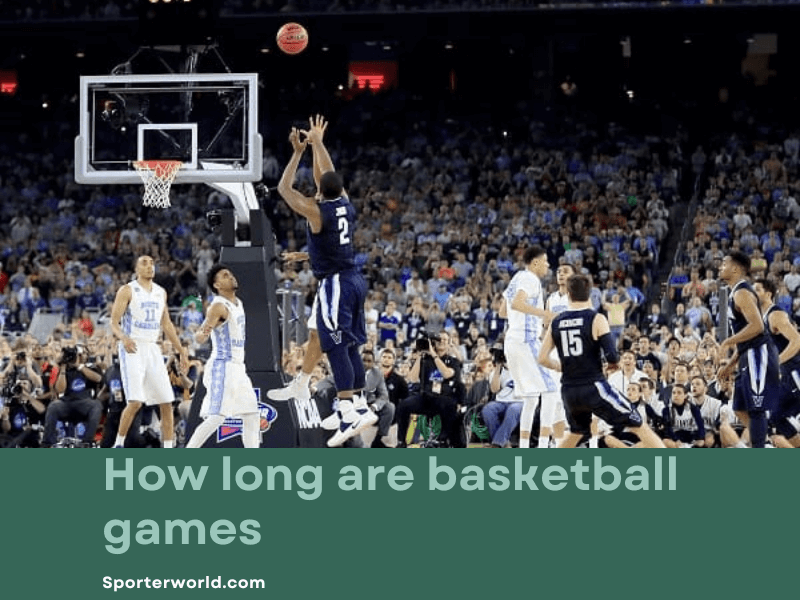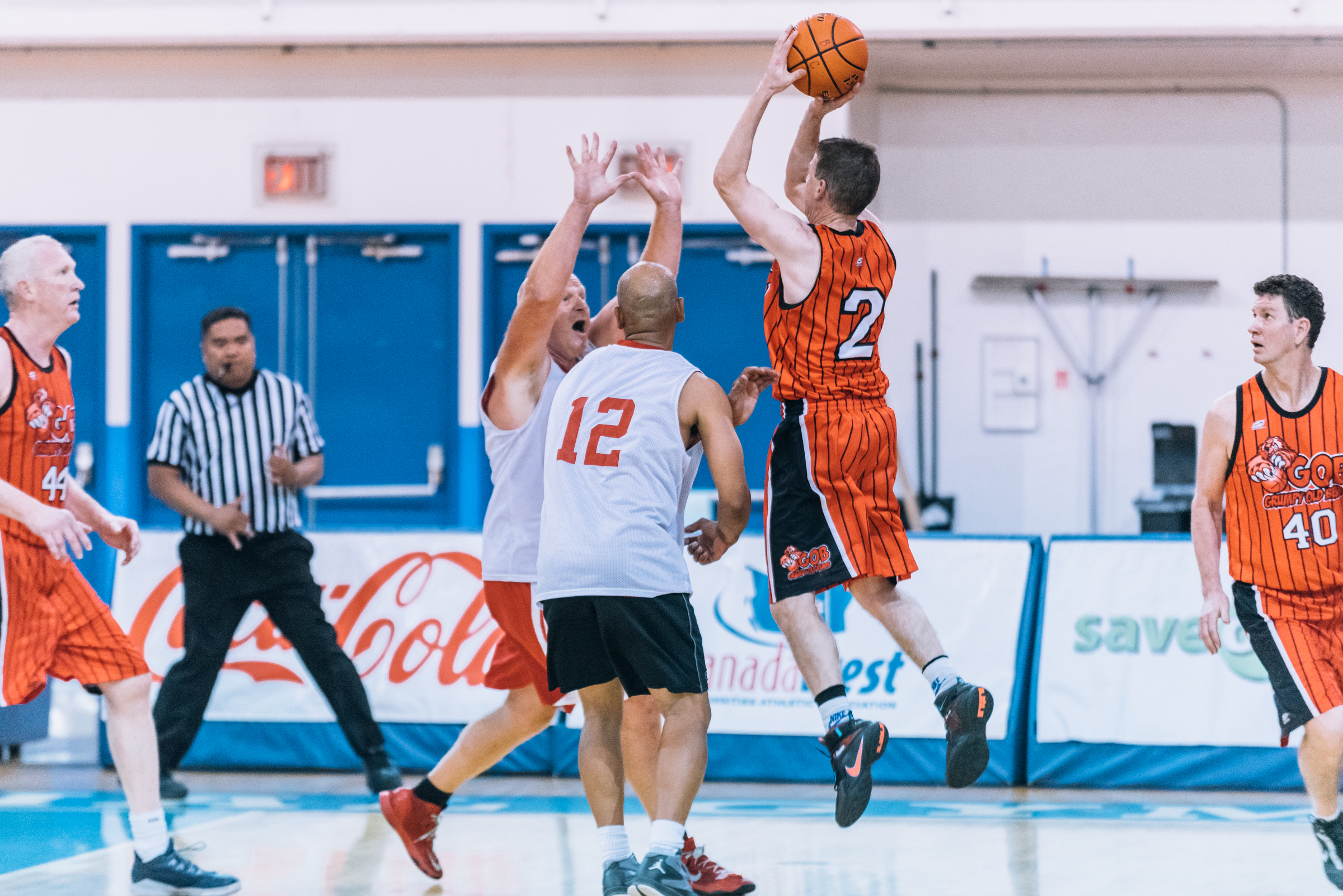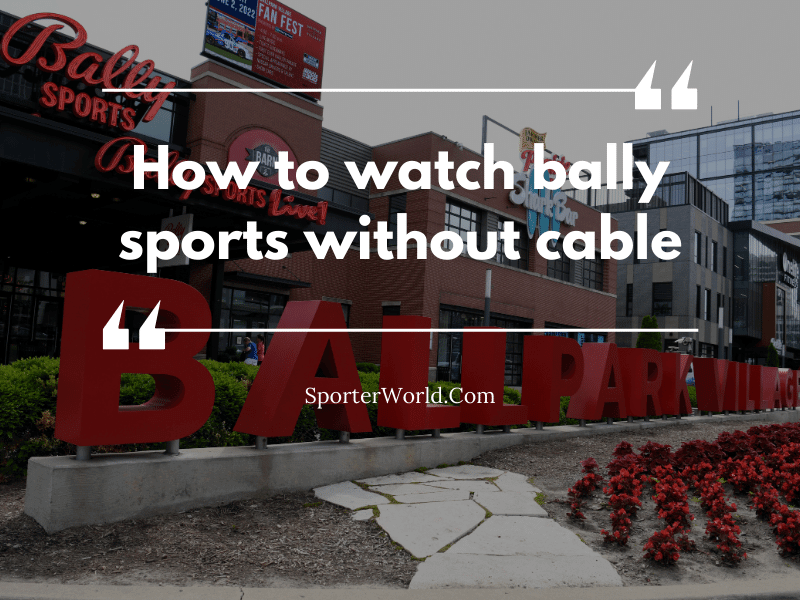A typical basketball game consists of four quarters, each lasting 12 minutes. This means that the total length of a basketball game is 48 minutes, plus any additional time needed to complete overtime periods or cover other delays and interruptions. The clock does not run continuously throughout the game but stops whenever an interruption, such as a foul, a timeout, or a jump ball situation.
At halftime, teams usually adjust their strategies and review notes from earlier quarters. It also allows fans to take breaks and vendors to replenish food and drink supplies. After the fourth quarter has ended, the team with the most points wins. If teams are tied, they play extra periods called overtimes, which last five minutes each according to league rules. After each period, referees check scores before declaring a winner and ending the game. In this article, we are wanna discuss the timing according to the match and league.
How Long Are Basketball Games?
Basketball is a popular sport that millions have played for over one hundred years. It is managed by the highest governing body, the International Basketball Federation (FIBA). They are the global administrators of this game and have complete control over basketball as we know it. This includes deciding what the length of a basketball game should be.
At the professional level, in places like the National Basketball Association, a typical basketball game can last 48 minutes with four quarters, each lasting 12 minutes. Some other levels, such as various European or international setups, instead opt to use 10-minute quarters, which causes an entire match to take 40 full minutes. But that varies with league and games, such as:
College Basketball
The NCAA is responsible for organizing and providing college basketball games. College basketball is popular for its fast-paced and intense style, with two 20-minute halves. The class breakdown results in players still improving their skills, leading to entertaining matchups due to the dynamic environment.
During college basketball games, there are breaks for fouls, injuries, timeouts called by coaches, and stagnant team strategies. During breaks in play, coaches can strategize and make necessary adjustments to maintain their team’s competitive edge. The opportunity for change creates suspense during college basketball games, maintaining fans’ attention until the game’s conclusion.
Junior Basketball
Junior basketball can be a great way to develop a young athlete’s skills and understanding of the game. As with all sports, the rules of play will vary from league to league, but at the junior level, most games are played in two 20-minute halves. Junior leagues usually add four 8-minute quarters to get players used to competing in sets without a halftime break that occurs during college and high school games. Interval times between these quarters follow the standard 2-minute/15-minute breaks found during NCAA rules.
Junior basketball players learn key skills for advanced play, including spacing, ball handling, athleticism, and offense/defense strategies. Knowing the time during play helps kids make offensive and defensive moves based on game flow and strategy. Junior basketball creates unforgettable memories for players and spectators.
High School Basketball
High school basketball is a great way to develop the skills of youth athletes. Much like college and junior leagues, the rules for high school games vary from one area to another. Generally, the game consists of four 8-minute quarters separated by two 15-minute intermissions. The halftime break allows coaches to change strategy or discuss tactics with their team.
The long quarters allow high schoolers to develop complex strategies and skills, which can eventually be applied in college. High school basketball is exciting for players and fans alike, as the game offers both competitive play and entertainment.
3VS3 Basketball
3VS3 basketball is an exciting and fast-paced version of the popular sport. Games are usually around one 10-minute period, with the clock being stopped should there be any injuries, stoppages, or other factors. The aim of 3VS3 basketball is to be the first to score 21 points – if this is not achieved before reaching 10 minutes, overtime will begin, whereby teams battle it out for 2 extra points. It is important to remember that this score regulation need not always apply, and games can see players running with lines mimicking the duration of play instead.
3VS3 basketball provides a more competitive version of conventional basketball as players get closer to one another and boundaries become less rigid. It provides mental challenges amongst teammates who must work together strategically to outsmart their opponents by playing faster on offense and tougher on defense than they may be used to playing on a full court. As such, this game format requires agility, quick thinking, and exact timing from the players if they will emerge victorious.
Street Basketball
Street basketball has become a global phenomenon as it’s accessible to anyone who can pick up and play. It offers an informal way of playing the sport, following its rules and regulations. This style of basketball is typically played in half-court configurations, with each team consisting of three players. One quarter or ten minutes is usually allocated for play, although this can vary depending on the players.
Street basketball is an intense game of strategy and skill, as each player must work to outsmart their opponents. As there are fewer players on the court, it requires athletes to be well-rounded in their skillset and able to think quickly on their feet. The shorter quarters also allow for more back-and-forth play, which creates plenty of excitement for players and spectators alike.
Women’s Basketball
Women’s basketball is no less action-packed or fast-paced than men’s basketball, but the timeframes of the competitions are often set differently. The highest school and WNBA/FIBA games involve four 8-minute or four 10-minute quarters, respectively, while NCAA women’s games play over two 20-minute halves. This range of game lengths allows each competition to be played in a style that suits the athletes involved and ensures that all players and teams receive equal playing time.
In addition to this, many competitions will provide additional playing time for endgame scenarios to ensure that results are completely fair. By having such thoughtfully considered and varied length of matches available, women’s basketball can guarantee a thrilling spectacle while remaining fully conscious of its player’s fitness levels and bodies by managing their exposure to physical contact and strain at varying lengths throughout the tournament.

How Overtime Works in Basketball?
Overtime is necessary for teams to settle a draw in basketball, where teams must compete for extra minutes to decide a winner. The NBA and the WNBA both have their own set of overtime rules that govern play during this additional period.
In the NBA, overtime consists of five minutes, with 130 seconds between regulation and overtime play. Teams may also use two twenty-second time-outs per overtime period with no limit on substitutions for their players. WNBA overtime rules: 120 seconds between regulation and overtime, only one substitution allowed in five minutes. Knowing overtime rules is crucial in determining game outcomes regardless of team affiliation.
What Factors Affect the Length of Basketball Games?
The length of basketball games can vary depending on several factors. Some of these factors include the game type, the rules in place, and how competitive the teams are.
The type of game being played is an important factor in determining the length of a basketball game. Professional or college basketball games are longer than high school or recreational games, and exhibition or tournament games can differ in length from league play.
The game’s rules can also affect the length of a basketball game. For example, if a game has more stoppages or time-outs due to referees’ calls, that will add additional minutes to a match. Similarly, if teams are playing slower or taking longer shots, the total game time will also increase.
Finally, how competitive the teams are can also affect the length of a basketball game. If two teams are evenly matched and playing their best, they will likely be fighting for every point, potentially leading to longer games.
Frequently Asked Questions
How many minutes is an NBA basketball game?
An NBA basketball game is typically 48 minutes in length. This consists of four 12-minute quarters, with a 15-minute halftime break. An additional five-minute overtime period is played in the event of a tie score at the end of regulation time. The game clock stops during certain timeouts and other events but does not stop when a team has possession of the ball and is attempting a shot.
What Equipment is Needed for Basketball?
You need more than just a hoop and a ball to play basketball. The equipment required depends on the level and type of game being played. For example, professional or college games will require additional protective gear such as helmets and knee pads.
What is the duration of halftime in a basketball game?
Halftime in a professional basketball game typically lasts around 15 minutes. This break allows the teams to regroup, receive coaching instructions, and rest. During halftime, performances, entertainment, or analysis segments often vary in duration based on the broadcaster’s schedule or event-specific considerations.
Can basketball games go into overtime?
Yes, basketball games can go into overtime if the score is tied at the end of regulation play. In the case of a tie, additional periods called overtime are played to determine the winner. In professional basketball leagues like the NBA, each overtime period is generally five minutes long. If the score remains tied at the end of the first overtime period, subsequent overtime periods are played until a team emerges as the winner.
Conclusion
The length of a basketball game can vary depending on several factors, including the game type, the rules in place, and how competitive the teams are. Professional or college games are typically 48 minutes long with a 15-minute halftime break. NBA overtime periods generally consist of five minutes each, and additional overtime periods may be played if needed to determine a winner. The equipment required for basketball depends on the level of play, and in the case of professional or college games, additional protective gear may be necessary.
Our recent post: Get Your Adrenaline Pumping with Del Amo Motorsports



